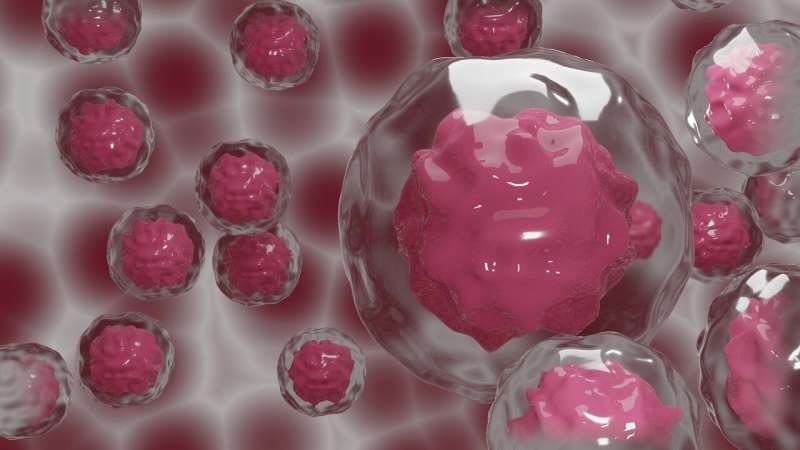Challenging the standard model of cancer

In spite of decades of research, cancer remains an enigma. Conventional wisdom holds that cancer is driven by random mutations that create aberrant cells that run amok in the body.
In a new paper published this week in the journal BioEssays, Arizona and Australian researchers challenge this model by proposing that cancer is a type of genetic throwback, that progresses via a series of reversions to ancestral forms of life. In contrast with the conventional model, the distinctive capabilities of cancer cells are not primarily generated by mutations, the researchers claim, but are pre-existent and latent in normal cells.
Regents' Professor Paul Davies, director of Arizona State University's Beyond Center for Fundamental Concepts in Science and Kimberly Bussey, cancer geneticist and bioinformatician from the Precision Medicine Program at Midwestern University, Glendale, Ariz., teamed up with Charles Lineweaver and Anneke Blackburn at the Australian National University (ANU) in Canberra to refine what they call the Serial Atavism Model (SAM) of cancer. This model suggests that cancer occurs through multiple steps that resurrect ancient cellular functions.
Such functions are retained by evolution for specific purposes such as embryo development and wound healing, and are usually turned off in the adult form of complex organisms. But they can be turned back on if something compromises the organism's regulatory controls. It is the resulting resurrection steps, or atavistic reversions, that are mostly responsible for the ability of cancer cells to survive, proliferate, resist therapy and metastasize, the researchers said.
Davies and Bussey are also members of ASU's Arizona Cancer Evolution Center (ACE) which seeks to understand cancer, not just in humans, but across all complex species, in the light of evolutionary processes.
"Cancer research has been transformed in recent years by comparing genetic sequences across thousands of species to determine gene ages," Davies said. Just as geologists can date rock strata, so geneticists can date genes, a technique known as phylostratigraphy.
"The atavistic model predicts that the genes needed for cancer's abilities are mostly ancient—in some cases little changed over billions of years," Davies added.
Lineweaver explained, "In biology, nothing makes sense except in the light of evolution, and in the case of cancer nothing makes sense except in the light of the deep evolutionary changes that occurred as we became multicellular organisms."
"The atavistic model of cancer has gained increasing traction around the world," added Bussey. "In part, this is because it makes many predictions that can be tested by phylostratigraphy, unlike the conventional somatic mutation theory."
Blackburn, a cancer biologist in ANU's John Curtin School of Medical Research, agreed.
"Appreciation of the importance of gene ages is growing among oncologists and cancer biologists," she said. "Now we need to use this insight to develop novel therapeutic strategies. A better understanding of cancer can lead to better therapeutic outcomes."
More information: Charles H. Lineweaver et al, Cancer progression as a sequence of atavistic reversions, BioEssays (2021). DOI: 10.1002/bies.202000305



















